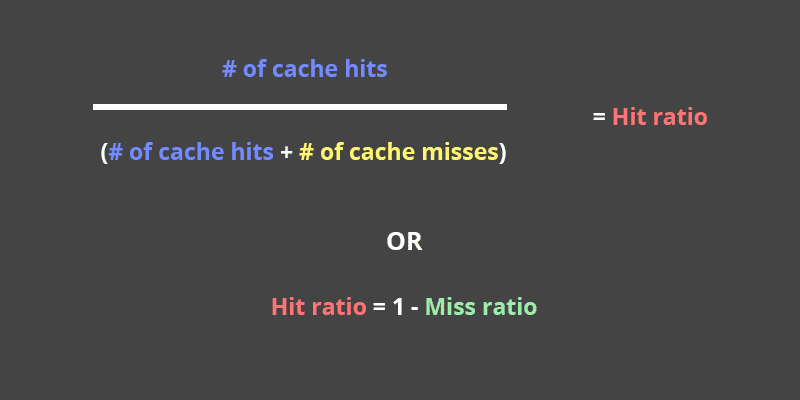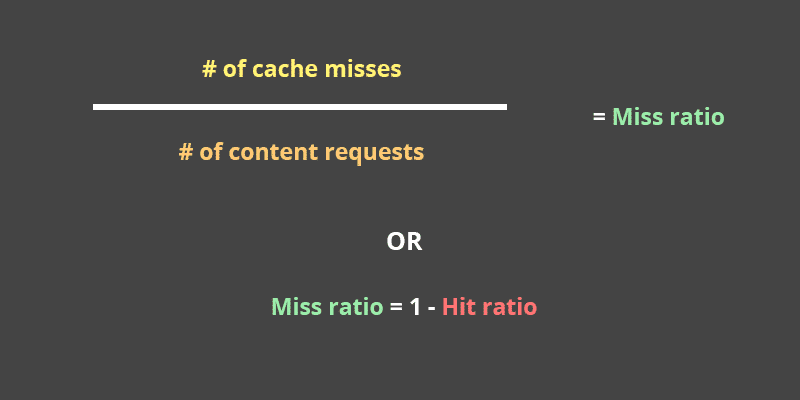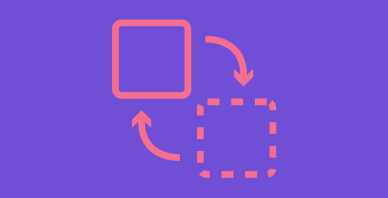Table of Contents
Last update on
Hit and miss ratios in cache memories are metrics that can help you determine whether your cache is working in tip top shape.
They’re often displayed among the settings of Content Delivery Network (CDN) caches, for example.
Here are more details on hit and miss ratios in caches, and how to calculate them and similar metrics to check your cache’s performance.
What is a Cache?
Before digging into hit and miss ratios in caches, it’s imperative to understand the meaning of a cache, and caching.
A cache is a high speed memory that temporarily saves data and content from a website, for example, so that the next time the site is visited, that content is displayed much faster. It helps a web page load much faster for a better user experience.
When data and content gets stored into a cache memory, it’s referred to as “caching.”
For details, check out Caching for WordPress, Explained in Plain English.
What are Cache Hit and Misses?
Similarly to know what caching is, it’s also essential to understand what hit and miss ratios are as well as miss penalties. That way, it’s easier to know what hit and miss ratios in caches are and why they’re important in helping determine your cache’s performance.
A cache hit refers to the situation wherein the cache is able to successfully retrieve data and content that was saved to it, and then display it on a web page.
A cache miss occurs in the opposite situation. The site requests the content from the cache, but after searching for it, the cache determines that content wasn’t saved. That’s when the cache saves the content so it’s available the next time it’s requested.
When a cache miss occurs, it takes up extra time and server resources which ends up slowing down your page speed load times.
One cache miss isn’t a big deal, but the more that happens, the worse it is for your server’s resources, and page load times.
This is where miss penalties come into the picture.
This delay that occurs in your page load times due to cache misses are known as miss penalties.
You can check out Cache Miss vs Cache Hit: What’s the Difference? for details.
Hit and Miss Ratios in Caches
Hit and miss ratios in caches have a lot to do with cache hits and misses.
A hit ratio is a calculation of cache hits, and comparing them with how many total content requests were received.
A miss ratio is the flip side of this where the cache misses are calculated and compared with the total number of content requests that were received.
The Importance of Hit and Miss Ratios in Caches
Hit and miss ratios are significant because, as mentioned earlier, they can give you a good idea of how well your cache is performing, and if its performance is optimized.
If you have a high hit ratio and low miss ratio, that means your cache is operating well. It also means that content is likely being retrieved from the cache quickly, and page load times are also as fast as possible for end users.
If the opposite is true, and you’re able to calculate that your cache’s miss ratio is high, and you hit ratio is low, then your cache isn’t running as well as it could be, and your users are seeing slower page load times than they should be seeing.
Knowing this, you can troubleshoot the issue to fix it up, and get your cache running more smoothly.
For example, if you have a high miss ratio, an option could be expanding your cache since the larger it is, the more data it can hold, and the less cache misses you should have as a result.
But, how do you calculate hit and miss ratios in caches?
Many CDNs display cache hits, misses, and the total number of content requests. If they also show other metrics such as hit and miss ratios, then you now know what they mean, and you can start troubleshooting, if necessary.
On the other hand, if you don’t have access to these ratios, you calculate them with the number of cache hits, misses, and total cache content accesses.
How to Calculate a Hit Ratio
To calculate a hit ratio, divide the number of cache hits with the sum of the number of cache hits, and the number of cache misses.
For example, if you have 51 cache hits and three misses over a period of time, then that would mean you would divide 51 by 54. The result would be a hit ratio of 0.944.
You can also choose to express this as a percentage by multiplying the end result by 100.
In the example above, the 0.944 result would be multiplied by 100 to get a hit ratio of 94.4%.
Alternatively, you can find out the hit ratio if you already know the miss ratio. Then, you can subtract one by the miss ratio.
You can do this because the hit and miss ratios equal to one.

How to Calculate a Miss Ratio
You can also calculate a miss ratio by dividing the number of misses with the total number of content requests.
For example, if you look over a period of time and find that the misses your cache experienced was11, and the total number of content requests was 48, you would divide 11 by 48 to get a miss ratio of 0.229.
Similar to hit ratios, you can also calculate a miss ratio if you already know the hit ratio. In that case, you can calculate it by subtracting one from the hit ratio.

What’s the Ideal Hit and Miss Ratios in Caches?
Generally speaking, for most sites, a hit ratio of 95-99%, and a miss ratio of one to five percent is ideal.
Keep in mind that every site is different so these aren’t one-size-fits-all numbers.
It may also be important to note that in terms of CDN caches, a high hit ratio doesn’t necessarily mean that your site’s end users are always getting fast load times.
This is because a cache hit doesn’t account for when content was successfully retrieved from the cache. If content was loaded from the cache, but from an edge server that was far away from the end user, it would still count as a cache hit, except the user would see slower page load times than if the edge server used was closer to them.
For details, check out How to Choose a CDN? Discover the Best CDN Services for WordPress.
Finding the Average Memory Access Time
To solve this dilemma, you can calculate the average memory access time to not only know how many cache hits are happening, but also how fast they’re happening as well.
That way, you can further understand where the issue may be if you’re finding you’re having a high hit ratio, but users are still complaining about a slow-loading website.
To calculate the average memory access time, add the hit time and the miss ratio, and multiply it by the miss penalty.

In Conclusion
Calculating the hit and miss ratios in cache memories as described above can help you better understand how well your cache is performing.
That way, you can help determine if your site’s page load times are consistently fast for your users. If they’re not, you’ll be able to take the next steps to troubleshoot, and fix any issues.
Have you ever calculated hit and miss ratios in cache memories? Are there other areas you’re unclear about? Share your experience and thoughts in the comments below.



